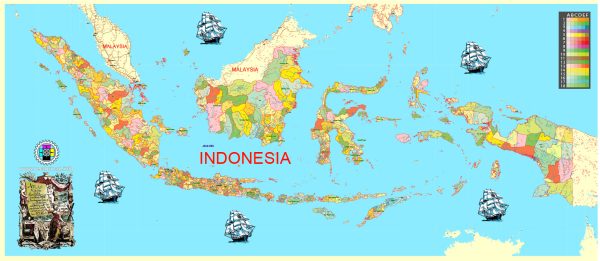Indonesia, a diverse and culturally rich archipelago located in Southeast Asia, has a long and complex history. Its history can be broadly divided into several key periods, from ancient civilizations to the modern era:
- Ancient Indonesia:
- Prehistoric Period: Human habitation on the Indonesian islands dates back tens of thousands of years. Some of the earliest known evidence of human existence in the region comes from archaeological finds on the island of Java.
- Early Kingdoms: Indonesia was home to several powerful maritime kingdoms, such as the Srivijaya Empire on Sumatra and the Majapahit Empire in Java, which thrived between the 7th and 14th centuries. These kingdoms played a significant role in shaping the region’s culture and trade networks.
- Arrival of Islam:
- The spread of Islam in Indonesia began in the 13th century, and over time, it became the dominant religion in the archipelago. The process of Islamization was gradual and often occurred alongside existing belief systems.
- European Colonization:
- The arrival of European powers in the 16th century had a profound impact on the region. The Dutch established control over the Indonesian archipelago, with the Dutch East India Company (VOC) being a major colonial force. The Dutch colonial rule lasted for almost three centuries.
- Japanese Occupation:
- During World War II, Japan occupied Indonesia, ending Dutch colonial rule. This period of Japanese occupation lasted from 1942 to 1945.
- Indonesian Nationalism:
- After the defeat of Japan in World War II, Indonesia declared its independence on August 17, 1945, under the leadership of Sukarno and Hatta. This declaration marked the beginning of the Indonesian National Revolution.
- Struggle for Independence:
- The Dutch, however, sought to reestablish control over their former colony. A protracted war of independence followed, culminating in the Dutch-Indonesian Round Table Conference of 1949, which officially recognized Indonesia’s independence.
- Modern Indonesia:
- Indonesia officially became a sovereign nation on December 27, 1949. Sukarno became the first president, and later, Suharto assumed power in 1967 after a period of political turmoil.
- Suharto’s New Order regime ruled Indonesia with an authoritarian grip for over three decades, bringing stability and economic growth but also facing criticism for human rights abuses.
- In 1998, amid widespread protests and economic turmoil, Suharto resigned, leading to a period of political reform and democratization.
- Since then, Indonesia has experienced political, economic, and social changes. It is known for its diverse culture, democratic elections, and a rapidly growing economy.
Today, Indonesia is the world’s largest archipelago and the fourth most populous country, with a rich cultural heritage, diverse religions, and a growing economy. Its history reflects a complex interplay of indigenous traditions, foreign influences, and a struggle for independence and self-determination.


 Author: Kirill Shrayber, Ph.D.
Author: Kirill Shrayber, Ph.D.